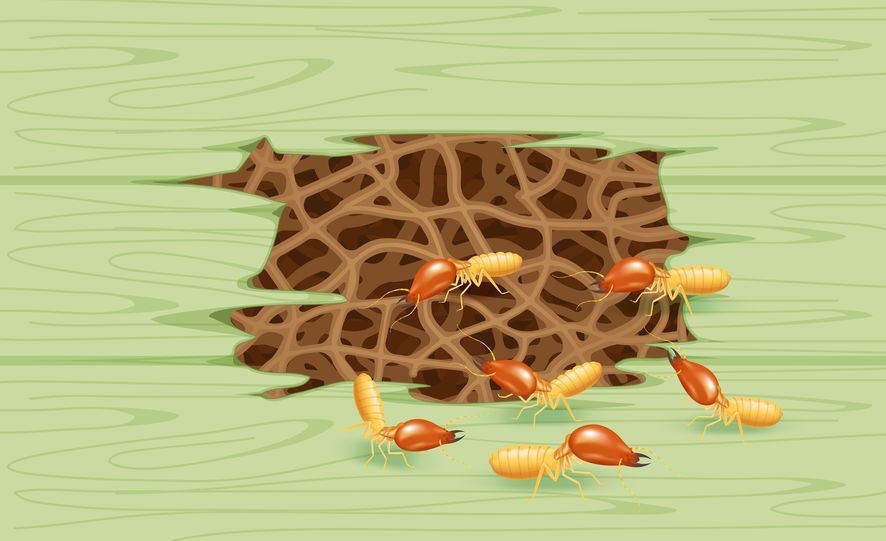When it comes to termites, an ounce of prevention is worth a pound of cure – especially when Americans are spending more than $5 billion a year in property damage caused by these crunching critters.
One place that might be overlooked, but is certainly easy, is your yard. Try these landscaping tips to stop termites from gaining easy access to your home:
Mulch Better
When most people think about mulch, they usually envision wood-based products, like wood chips or chunked bark, which are all filled with the cellulose that termites like to munch on. Some types of mulch are treated with chemicals that make them less appealing to termites, but these chemicals break down over time or leach into the soil, leaving your home at risk. Avoid using wood mulches in garden beds beside your house. Instead, choose a low- or no-cellulose ground cover like pine straw, rubber mulch, gravel or rocks.
Pay attention to where you’re placing the mulch. Never apply mulch on top of or directly next to the slab of your home. Instead, leave an 8- to 12-inch barrier out from your siding before you start using mulch. If you’re planting the proper distance from your structure, you shouldn’t need to place mulch closer than that.
The Drain Game
Subterranean termites look for ways to enter your home through the soil, but dampwood termites are looking for moist, damaged wood to take advantage of. This is why it’s critical to keep an eye on areas of your landscape that collect water or don’t drain well. Make sure the ground slopes away from the foundation to carry off excess rainwater. Moisture build-up could make your home more vulnerable to termite infestations. Look for things such as:
- Clogged or leaky gutters that overflow after rainfall
- Low-lying areas where water pools against the side of your home
- Shady spots where wood remains damp for several hours
Plant Wisely
Planting close to your home doesn’t just disrupt surface-level protective barriers; it can also increase your risk of termite infestation by offering pests a straight route to your home.
As shrubs or vines grow alongside your house and come into contact with siding, they begin acting as a highway for hungry termites. All it takes is a small crack or patch of damaged siding to invite pests directly into your home. Planting too close to your home can also make it difficult for pest control exterminators to closely inspect those areas for termite activity.
If there are already shrubs next to your home, make sure that you’re keeping branches and leaves trimmed away from your exterior. If you’re still planning out your landscape, plant three feet or more from the edge to allow for enough room to grow. As an added bonus, shrubs located further from your house will benefit from better light and air circulation.
Don’t let your landscaping increase your risk for termite infestation. You can still have a beautiful yard AND keep termites at bay!
Termites causing a problem in your Boston home or business? Get a no-obligation inspection and treatment estimate from a termite professional.

